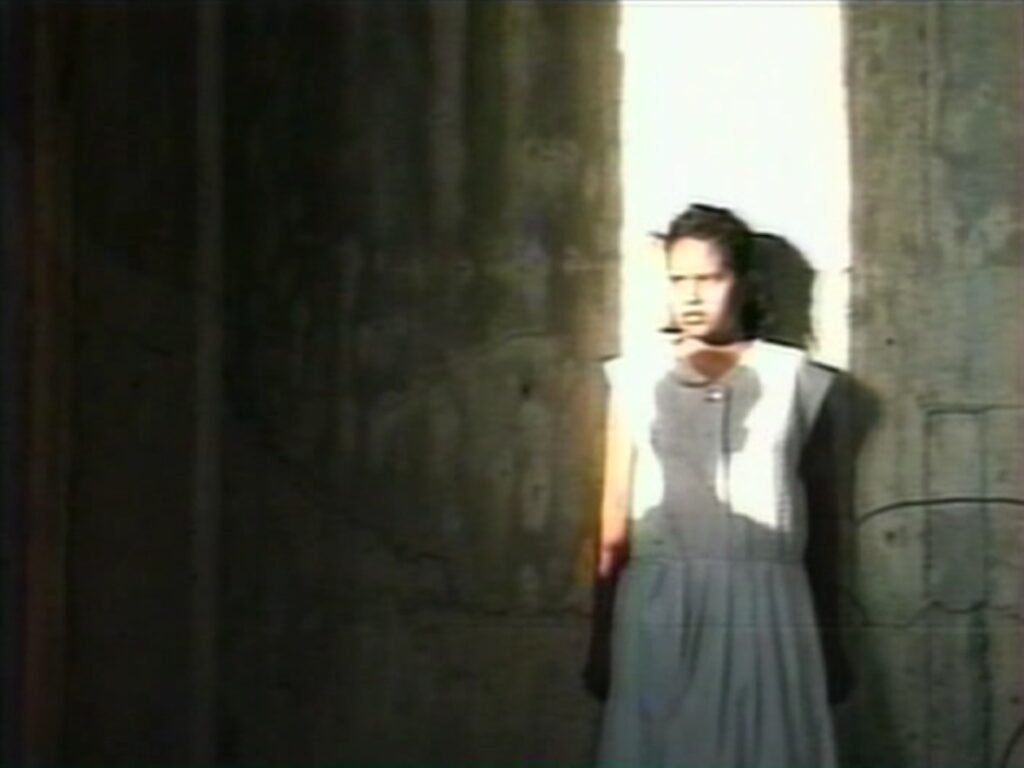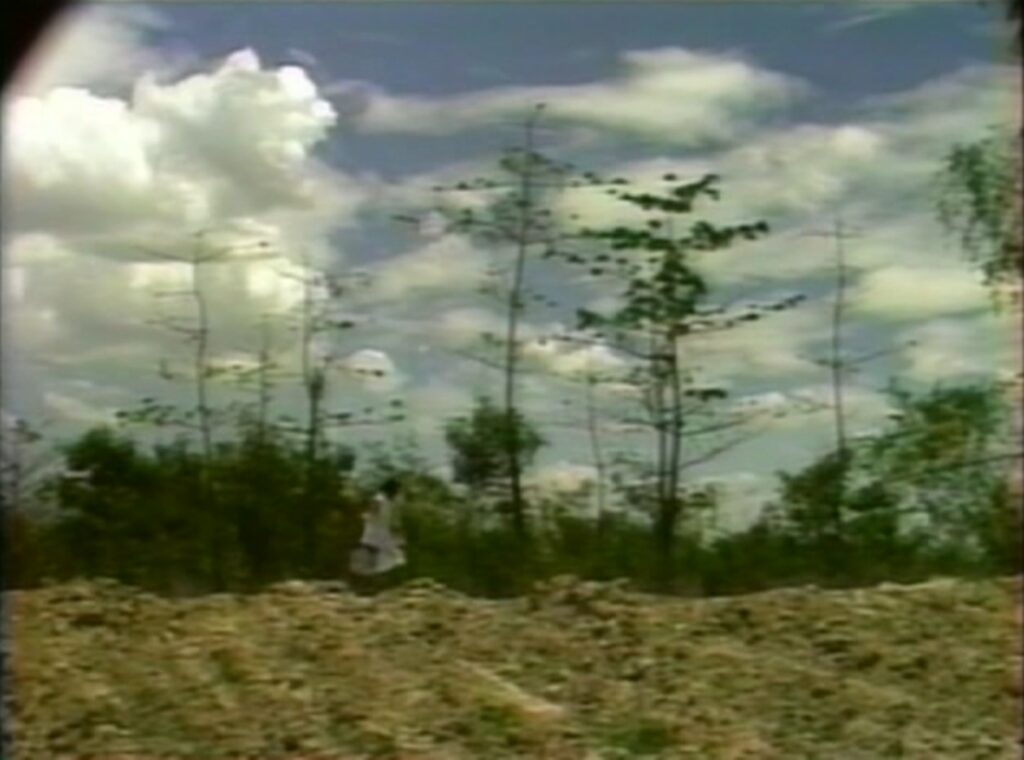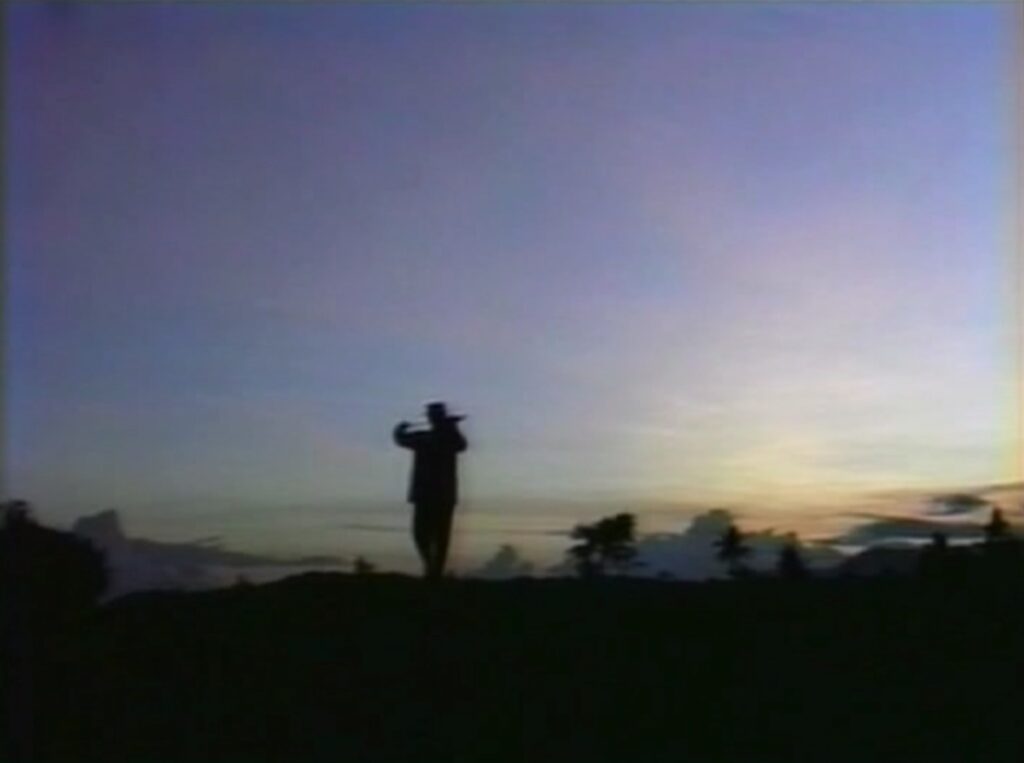
A Shock
and A Rush
Vicente Garcia Groyon
Huni, 1st place in the Feature Category, 1991
Ubo, 2nd place in the Experimental Category, 1993
In 1990, Eric Carlos, Marc de la Cruz, and I were Communication Arts majors at DLSU-Manila, casting about for a project to submit as a thesis. We settled on a fiction narrative short, understanding that it would be an expensive undertaking and that our parents would have to shoulder the production costs. If there had been financial grants or subsidies available to students with no filmography or experience to speak of, we didn’t know of them.
We completed the project on the thinnest of shoestring budgets, with many costs unrecorded or mysteriously absorbed by other people in our circles. A final conservative estimate pegged our production costs at about P30,000.00, split three ways. The amount seemed astronomical, but even then we only scraped by through some blithe T.Y. arrangements and by cobbling the film together out of things we already owned or could borrow or steal.
As students, we were unaware of how to show our film to larger audiences or award-giving bodies. The following year, the CommArts Department took the initiative of sending in a selection of student theses to the Gawad Alternatibo for consideration. Some student projects had already received the award in the past, or been screened at local and international festivals. These works were revered by the current majors and often studied for inspiration and modeling.
It was gratifying that our project, Huni, won the First Prize in the Short Feature Video category of the Ika-5 Gawad Alternatibo in 1991. There was a modest cash reward that we dutifully returned to our parents, but the prestige conferred by the award seemed more satisfying. After months of needling our parents for more funds, it was nice to have an intangible reward with name recall that justified all the expense.
Winning that first Gawad Alternatibo was a shock and a rush. We’d trooped to the CCP on foot from the DLSU-Manila campus to attend the ceremony, and were crowded in the rear of the Tanghalang Manuel Conde. Everything—from hearing our film’s title announced to stumbling out after the program was over—was a blur. My most vivid memory of that evening was the glee with which our professors congratulated us: “Because we are happy, we will scream” and then all of us screaming at the black-and-white mural in the lobby.
Part of the glee was at having penetrated the world of “alternatibong pelikula at video,” then very much a Quezon City domain dominated by the University of the Philippines Film School and Mowelfund Film Institute, the twin epicenters of alternative filmmaking, and not a place for bougie Lasalistas. Our shaggy thesis received some press coverage and was screened a few more times, attracting the curious who wanted to see who these upstarts were. Most importantly, it gave us a prestigious credential that we could add to our resumes.
I’m almost sure it was the strength of this credential that earned me a film grant from the Manila Film Festival the following year (resulting in Ubo, my second film and Gawad Alternatibo win). How else to explain my inclusion among the likes of Cesar Hernando, Tony Aguilar, Jon Red, and the Agbayani brothers?
I no longer recall the specifics of applying for this grant, only that I did so with Brian Michael C. Lim and the late Reyster Langit, both contemporaries a year younger in the DLSU Communication Arts program. I remember that we didn’t pitch storylines to get in, which makes me wonder how the grantees were selected. I do recall us being exhorted to make our stories “political” by the equally inspiring and intimidating Nick Deocampo, who was administering the grant in his capacity as Mowelfund Director.
The grant consisted of a handful of reels of 35mm Kodak negative stock with a processing and printing package attached, and the use of the facilities at the Philippine Information Agency. Brian, Reyster, and I quickly found ourselves way in over our heads, dealing with a medium we had never used before—35mm film—which necessitated a cohort of professional personnel and equipment we had no free access to. The rest of the expenses came out of our own pockets, haggled down from the usual rates. We called on our network of friends and acquaintances for pro bono work, although most surprising was when a young cinematographer volunteered to shoot our film free of charge—Mowelfund wunderkind Yam Laranas. It was an unexpected kindness, and without him our project would’ve been dead in the water.
The production of Ubo was a daunting slog, to say the least. The one-day shoot went without a hitch, but post-production proved more challenging. Although the grant was meant to be a venue for professional filmmakers to experiment and break new ground, in our case it was an extension of film school. We’d never worked with film, not even Super-8, and we fumbled our way through the production, learning from numerous mistakes and attempting standard film processes, like foley sound recording, for the first time.



Sadly, I was unable to see the film through to completion. I needed to relocate to Bacolod City and leave the completion of Ubo to Brian and Reyster, who also received its Second Prize in the Experimental Film Feature category (Brian’s thesis received a Gawad Alternatibo that year as well, in the Video Feature category). I suspect its inclusion in the experimental category was a case of strategic positioning to ensure a win (all five grantees swept the film division that year), although I was later told that the absence of dialogue in Ubo was unusual enough to merit the label.
Today, I’m envious of all the support and opportunities available to film students embarking on their first projects. This is a direct effect of the recognition of indie filmmaking as a viable alternative space for discovering and nurturing talent outside of studio-based filmmaking. It’s also because colleges and universities began offering degrees in filmmaking rather than tucking them away in Mass Communication programs. Because film and video are terribly expensive art forms, especially if one compensates all of one’s collaborators, financial support is essential for encouraging students to pursue passion projects instead of opting for more economical paper research theses. However, the support available today elicits mixed feelings in me.
It’s certainly an unambiguous good that the field has been professionalized, such that inexperienced artists are less vulnerable to exploitation and deception. But I can’t help but feel a little astonished that an attached producer has become a standard requirement, as well as things like counterpart financing plans. I’m still not convinced that pitching should be part of an indie filmmaker’s skillset, or that greenlit projects should be mentored and monitored by an organizing committee. A large part of the allure of alternatibong pelikula at video in the 1980’s and 90’s was that a filmmaker could suddenly whip out something they had been working on by themself, with nothing but the vision and creative impulses behind it. It could turn out to be obscure and impenetrable just as easily as it could be unoriginal and uninspired. Or it could be stunningly new and provocative. Until the house lights were dimmed and the projector fired up, there was no way of knowing. The initial flickers on the screen held the promise of something raw and fresh, never mind if it turned out brilliant or terrible. The rawness was the thrill of alternative cinema, and I’m not sure that this has survived professionalization.
These days, a concept is likely to be workshopped to within an inch of its life, watered down to a generic, inoffensive, spelled-out consistency that can be articulated in three minutes or less. While this might ensure a lowest common denominator of quality (ensuring that moviegoers get their money’s worth, whatever that is), it leaves no room for the kind of wala-lang experiments where happy accidents can happen, the kind that really poke through the edges of the envelope and touch the new.
On the other hand, all this has come about in the age of more democratic digital platforms and social media, where one can toy freely with cinematic language, albeit within “community standards.” Everyone’s phone is a high-quality camera, an editing machine, and a digital effects generator, and the culture has reverted to Lumiere-esque shorts on Tiktok. The ubiquity of the tools and platforms has resulted in a kind of conundrum: What counts as alternative these days, and is it still an incubator for the new?
I realize I’ve turned into the kind of old-timer who waxes nostalgic for the good old days. And while I was never fully immersed in the world of alternative filmmaking, I enjoyed enough of it from the fringes to miss it today. The Gawad CCP provided a space where a beginner like me could go toe-to-toe with the pros, and for that I am grateful.
Gawad CCP para sa Alternatibong Pelikula at Video, or Gawad Alternatibo for short, is the longest-running independent short film festival in Southeast Asia.
quick links
Contact Info
- Roxas Boulevard, Pasay City, 1003 Metro Manila
- Tue-Fri 9am-6pm
join our Newsletter
Sign up for our newsletter to get updates.
